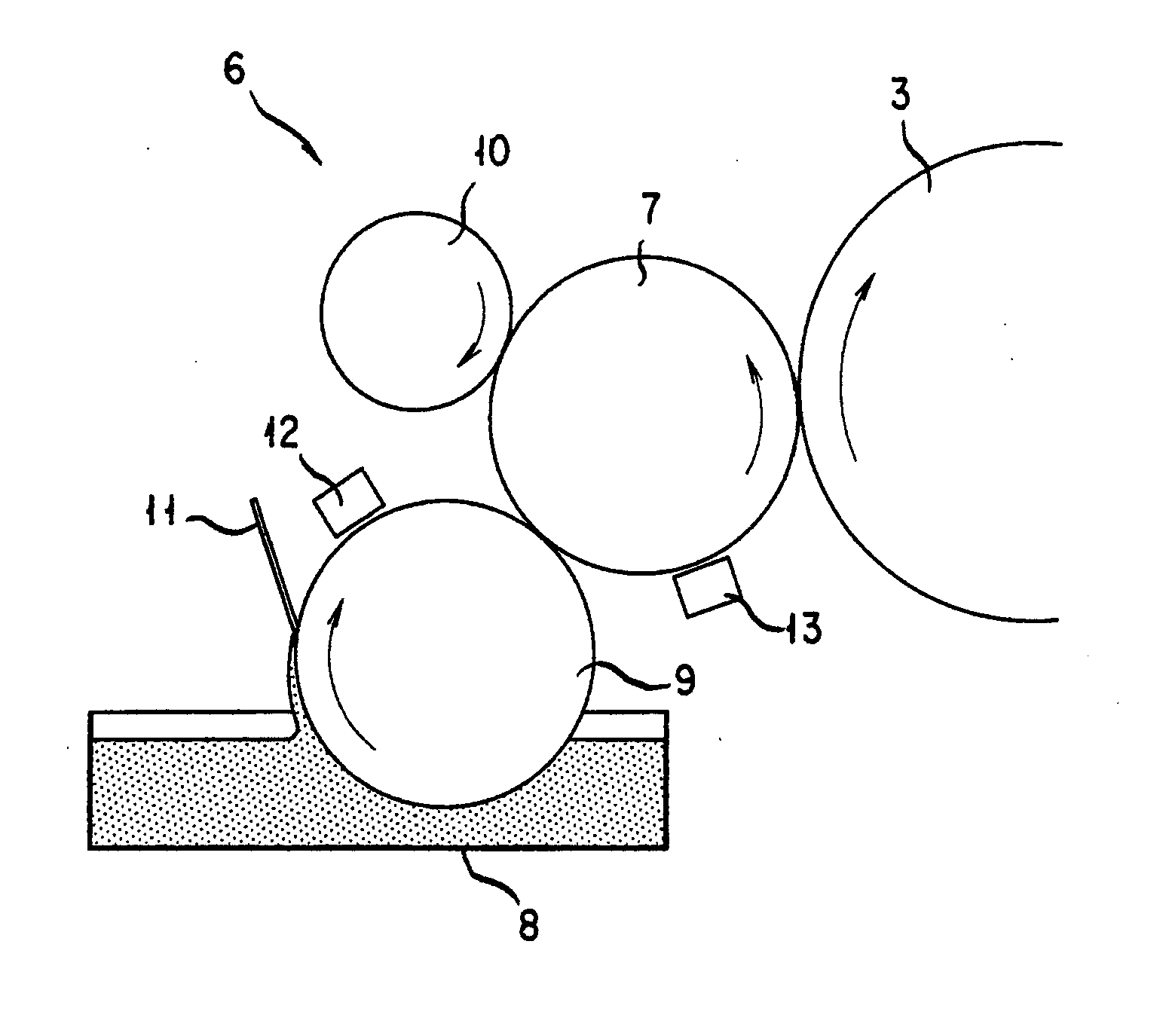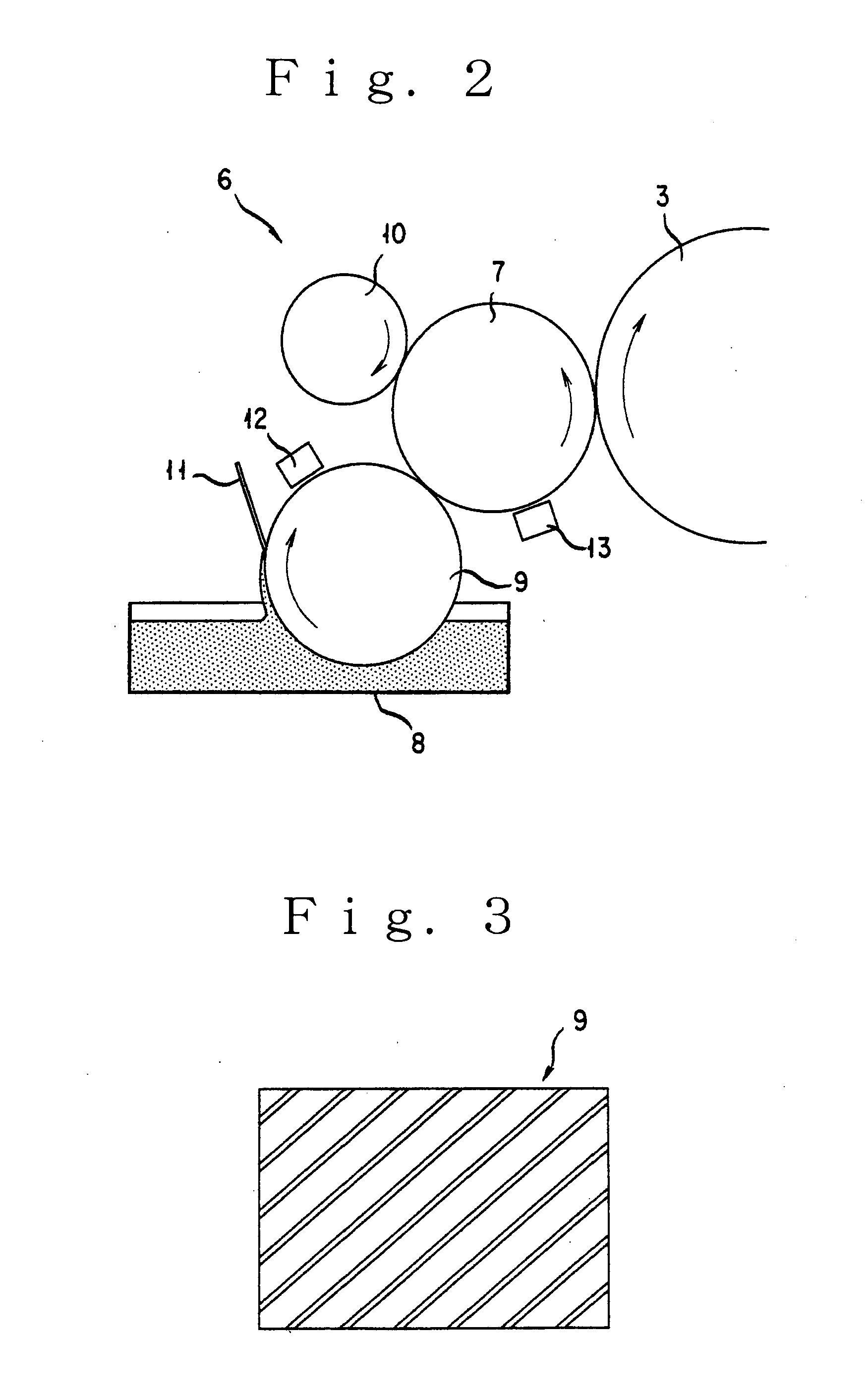Wet type developing apparatus and wet type developing method
- Summary
- Abstract
- Description
- Claims
- Application Information
AI Technical Summary
Benefits of technology
Problems solved by technology
Method used
Image
Examples
first embodiment
[0048]Mention is now made of the present invention with reference to FIGS. 1 to 3.
[0049]FIG. 1 is a view showing a wet type electrophotographic printing installation or machine 1 in which a plurality of (four) wet type electrophotographic printers 1a, 1b, 1c and 1d are arranged vertically parallel to one another, each of which uses a wet type developing apparatus. In the electrophotographic printing installation 1, a continuous web of paper 2 is passed first through the wet type electrophotographic printer 1a at the lowermost side and then through the electrophotographic printers 1b, 1c and 1d in turn from the lower side to the upper side to effect multi-color printing.
[0050]Since the wet type electrophotographic printers 1a-1d are identically made up, mention will be made below of makeup of the lowermost wet type electrophotographic printer 1a.
[0051]In the Figure there are shown a photoconductor drum 3, a transfer roller 4 in rotational contact with the photoconductor drum 3 and a...
PUM
 Login to View More
Login to View More Abstract
Description
Claims
Application Information
 Login to View More
Login to View More - R&D
- Intellectual Property
- Life Sciences
- Materials
- Tech Scout
- Unparalleled Data Quality
- Higher Quality Content
- 60% Fewer Hallucinations
Browse by: Latest US Patents, China's latest patents, Technical Efficacy Thesaurus, Application Domain, Technology Topic, Popular Technical Reports.
© 2025 PatSnap. All rights reserved.Legal|Privacy policy|Modern Slavery Act Transparency Statement|Sitemap|About US| Contact US: help@patsnap.com



